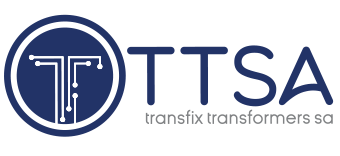The National Energy Regulator of South Africa (Nersa) reports that it registered a further 105 generation facilities during the period from January to March 2024, raising to 1 415 the number of facilities registered since the system was introduced in 2018. In a statement, Nersa said the newly registered facilities had a combined capacity of 788 MW and a total investment value of R18.4-billion, increasing the overall capacity of registered projects to 7 158 MW and the total investment value to R131-billion.
The age-old practice of monthly meter readings is drawing to a close in the face of the modern world’s dynamic and fluctuating energy demands says utility metering management solutions provider Remote Metering Solutions (RMS) chief commercial officer Frikkie Malan. He explains that traditional methods and legacy systems no longer meet the demand of capturing the complete picture of energy consumption and building operations, necessitating a shift towards real-time load profile consumption data enabled by smart metering.
Eskom Transmission CEO Segomoco Scheppers says he believes the “pieces are falling into place” that will allow the power utility to “ramp up and move faster” in expanding the country’s constrained power grid. Grid expansion will enable Eskom and independent power producers to bring much-needed new generation capacity online.
Energy management and automation company Schneider Electric has launched a local electric vehicle (EV) charging solution, to cater for African countries’ transition away from fossil fuel-powered cars.
The solution, called EVLink, is part of Schneider’s EcoStructure eMobility offering and was developed in response to the lack of supporting infrastructure for EV charging on the continent.
Gas has an important role to play in South Africa’s energy transition journey, Kearney partner Prashaen Reddy says amid calls for public comments on a draft Gas Master Plan, which was released for comment at the end of April. He notes that the Southern Africa region has had several recent gas finds across Mozambique, South Africa and Namibia, that allow for the development of indigenous resources to drive industrialisation, social development and economic growth.
All four Eskom coal-fired power stations that are currently maintaining electricity availability factors (EAF) of more than 75% are headed by women. This was highlighted by Eskom group executive: human resources Elsie Pule on Thursday. She was participating in a panel discussion at the Women in Energy breakfast at the Enlit Africa 2024 conference, at the Cape Town International Convention Centre. Every time a woman took over a power station, she affirmed, the EAF shot up. Eskom, a decade ago, created a Women Advancement Programme. Over ten years, this has resulted in the proportion of women senior executives in the State-owned national electricity utility increasing from 29% to 42%. The same progamme has reduced the gender salary differential to 6%.
The Presidency does not anticipate that Eskom’s move to reserve scarce grid capacity for independent power producers (IPPs) participating in public procurement bidding rounds will disrupt the more than 130 private IPP projects being advanced outside of those processes to supply private consumers. Speaking during a briefing convened to report back on the reforms implemented under Operation Vulindlela, including those undertaken to address South Africa’s loadshedding crisis, the Presidency’s project management unit head Rudi Dicks lauded the progress being made through the Energy One Stop Shop to support the private projects stimulated by the reform to allow grid-connected private projects of any size to proceed without a licence.
Municipal debt remains one of Eskom’s biggest challenges, says Eskom CFO Calib Cassim. “At the end of March, we were sitting at around R75-billion of municipal arrears owing to us. That has grown in the last financial year in the region of R15-billion.
Original-equipment manufacturer (OEM) Daimler Truck Southern Africa (DTSA) has launched a line of electric heavy-duty trucks, called eActros, as part of its Power Up electric mobility offering.
The fully battery-electric truck range includes the Mercedes-Benz eActros 300, comprising 4 x 2 and 6 x 2 wheelbase configurations, the Mercedes-Benz eActros 400 in a 6 x 2 wheelbase configuration, as well as a truck tractor variant.
In this article, BDO South Africa partner and renewable energy expert Nato Oosthuzen writes shares his insight on where the country is at with loadshedding and the reasons why he is cautiously optimistic about the potential for a brighter future for South Africa.
INDUSTRY NEWS
- NERSA appoints Electricity Market Advisory Forum to guide power-market reformDecember 19, 2025 - 2:04 pm
- Eskom offers more details on envisaged roles of the NTCSA and the TSODecember 18, 2025 - 11:04 am
- NTCSA says any electricity deal to salvage Mozal must ensure its financial sustainabilityDecember 17, 2025 - 3:01 pm
WHERE TO FIND US
Address
9 Yellow Street
Botshabelo Industrial Area
Botshabelo, Free State
Call / Email Us
Tel: +27 (0) 61 956 6772
Email: info@transfix.co.za
